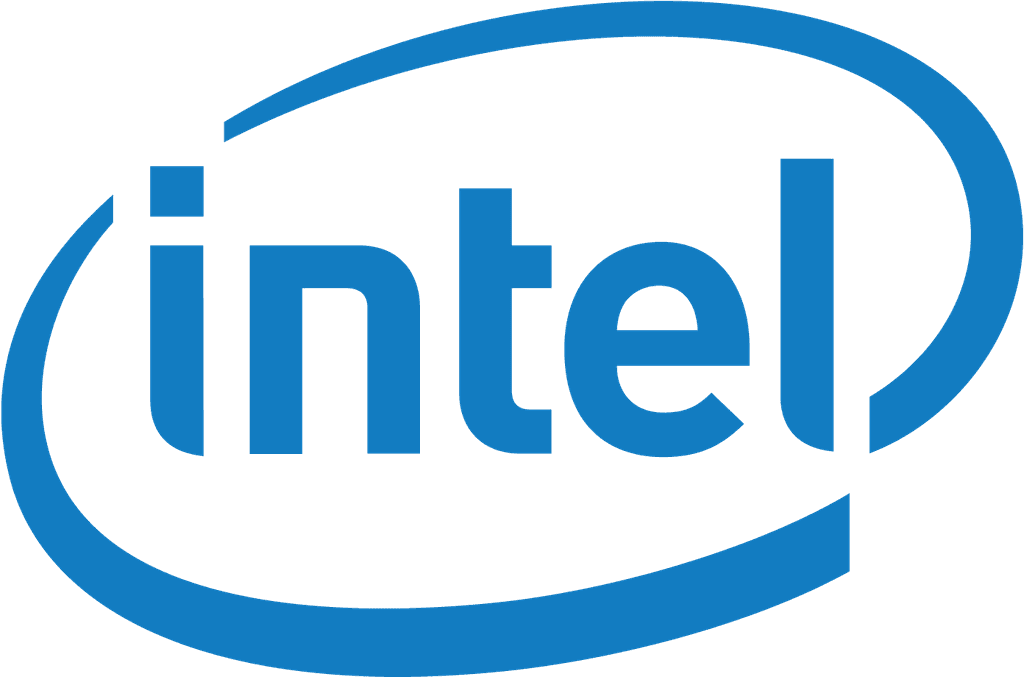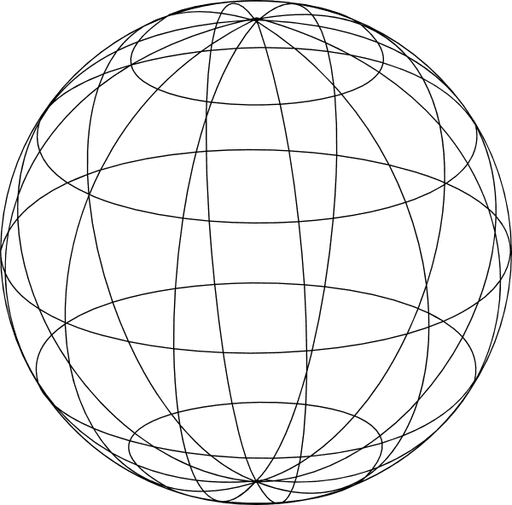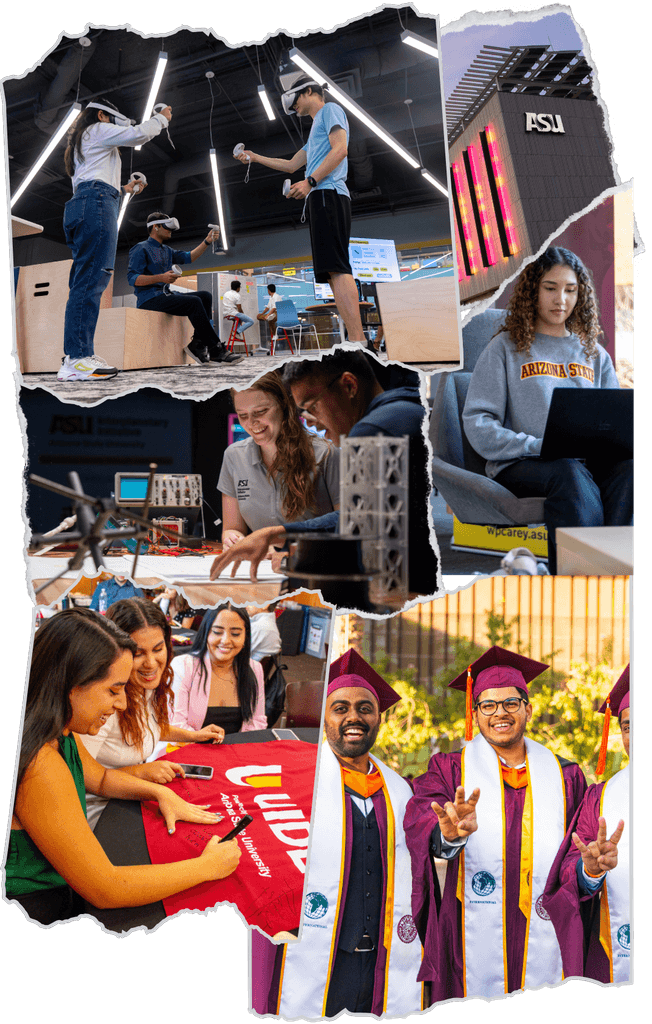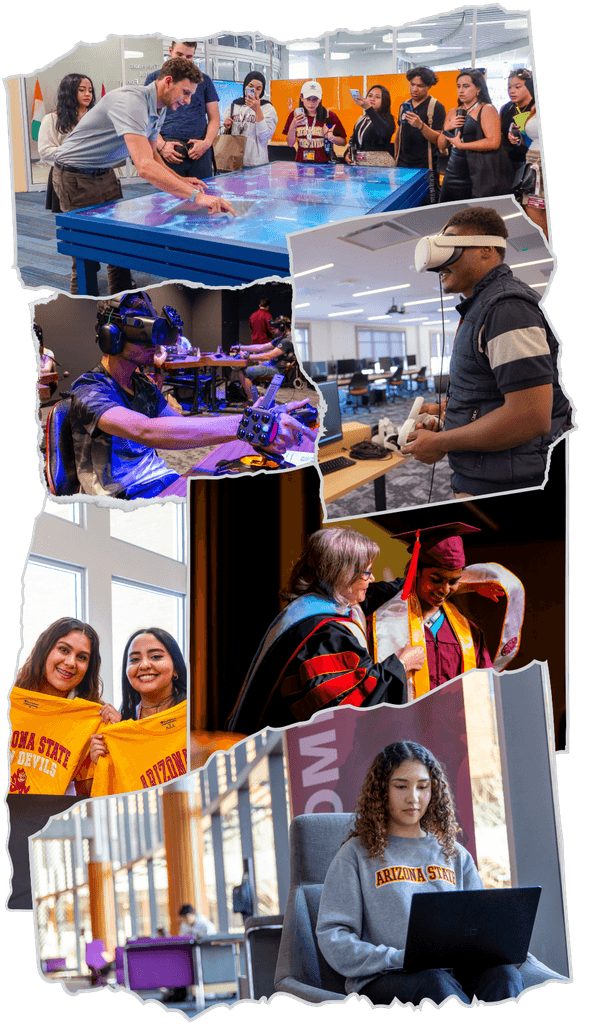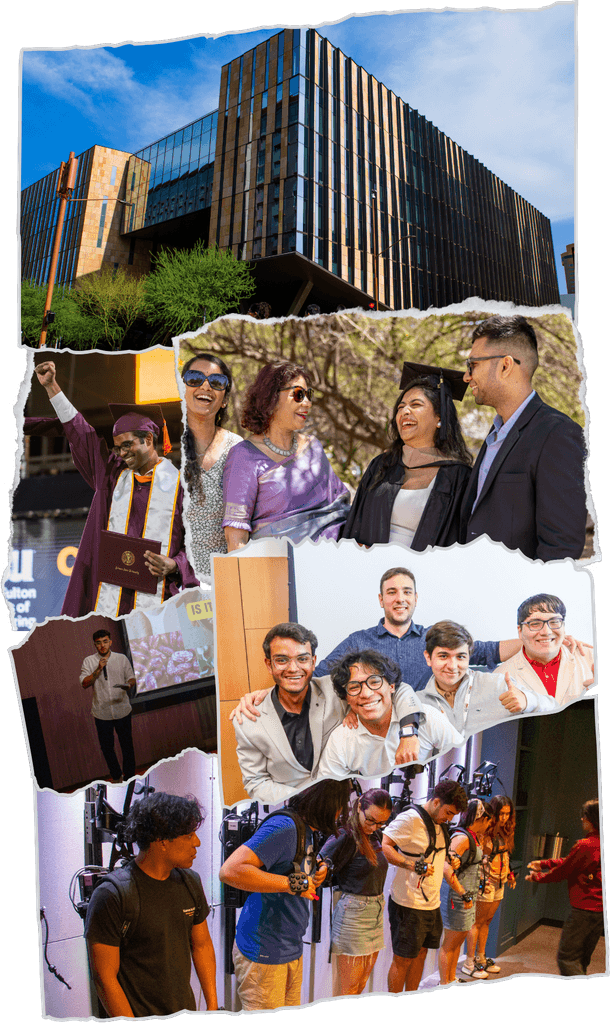You’ll spend your first two years at Anurag University in Hyderabad, building a strong foundation in computer science, programming, systems, and problem-solving.
Then, you’ll continue at Arizona State University in the U.S., where you’ll go deeper into applied learning — from AI and machine learning to cloud computing, cybersecurity, and software engineering.
By the end of four years, you graduate with the skills to step into real-world roles — and the experience to be considered by some of Arizona State University’s top recruiters, including Amazon, Intel, Apple, Deloitte, Boeing, PayPal, Honeywell, and Tesla.
Right after Class 12, you start with two focused years at Anurag University in Hyderabad, where you build a foundation in computer science through hands-on learning and individual guidance.
The curriculum covers programming, systems design, algorithms, and data structures — designed to help you understand how real engineering problems are solved.
This foundation prepares you for the next phase at Arizona State University in the U.S., where you deepen your skills, gain real-world exposure, and train for roles in today’s fast-moving tech industry.
With a cohort limited to 25 students, the program is built for focus — not scale. You learn in a close-knit environment, where every student has access to one-on-one support, individual mentorship, and deeper engagement with the material.
Small batch size isn’t just about attention. It’s about depth — more time with faculty, more room to grow, and more clarity as you move through each phase of your training.
Go from Foundation to Mastery — With a Curriculum That Trains for the Real World
After graduation, you become eligible for the U.S. Optional Practical Training (OPT) program — giving you the chance to apply your skills in real-world settings.
This opens the door to roles at some of ASU’s top employer partners, including Amazon, Intel, Banner Health, Deloitte, Honeywell, Wells Fargo, American Express, Microsoft, and PepsiCo.
According to the U.S. Bureau of Labor Statistics, computer scientists earned a median annual salary of $131,490 (~₹1.15 Crore) in 2021 — with job opportunities expected to grow 21% between 2021 and 2031.
Principles of Programming Languages
Data Structures and Algorithms
Object-Oriented
Programming
Operating Systems and Digital Design Fundamentals
Probability and Statistics for Engineering Problem Solving
Computer Organization and Assembly Language Programming
You begin with two years at Anurag University, building a strong foundation in computer science — covering subjects like programming, systems, data structures, and software development.
Then, you transfer to Arizona State University for the final two years, where the focus shifts to applied learning. You work with real tools, real systems, and gain hands-on experience in how engineering teams solve problems — from AI and cloud computing to cybersecurity and scalable software.

AAA+ Rating by Careers360 Ranking 2019
Anurag University has achieved a prestigious AAA+ rating in the Careers360 Rankings 2019, reflecting its excellence in academics and holistic development.
Careers360 Rankings, 2019.

Ranked "8th Best Engineering College" in Telangana by The Week 2016.

National Institutional Ranking Framework (NIRF), 2022
Worldwide Among Universities Granted U.S. Patents.*
*As per U.S. National Academy of Inventors, 2023.
University for Innovation, Sustainability, and Global Impact.*
*As per U.S. News and World Report, 9 Years, 2016-24.
Public University, Chosen by International Students.*
*As per Institute of International Education, 2023.
in the U.S. for Employability Among Public Universities.*
*As per Global Employability University Ranking and Survey, 2024.
Undergraduate Students
Degree Programs
Faculty Members
Alumni Network
Graduates of the Computer Science Engineering program step into high-demand careers across software, infrastructure, systems, and emerging technologies — in roles that value problem-solving, precision, and real-world application.
These roles are in demand across sectors like technology, aerospace, healthcare, finance, and manufacturing — offering strong earning potential, clear career growth, and the opportunity to work on challenges that shape the future.
Software
Engineer
Full Stack Developer
Systems
Architect
Data Scientist
Data Analyst
Machine Learning Engineer
Cybersecurity Analyst
Ethical Hacker
Security Engineer
Mobile App Developer
Web Developer
Game Developer
IT Consultant
Product Manager
Project Manager
AI / ML Developer
Blockchain Developer
Cloud Architect
Here’s exactly what you’ll pay—and how your journey from Hyderabad to the U.S. becomes affordable.
But You Won’t Have to Pay That All at Once—Or All on Your Own
We make the international degree program truly accessible—with ₹87 Lakh of merit-based financial support that covers your tuition, living, and more. No collateral. No cosigners. No sleepless nights.
Class 12 Today. A Life in the U.S. Tomorrow.
₹1.18 Cr - ₹87 Lakh* =
Just ₹31 Lakh upfront to begin.
Here’s Why a ₹31 Lakh Upfront Investment in the International Degree Program Beats Studying Abroad for 4 Years or Choosing a Private Engineering College in India
Most private colleges in India teach outdated skills. Studying all 4 years abroad costs over ₹2 Cr. And even then, most students need a master’s to land a job in the U.S. This international degree program changes that. With just ₹31 Lakh upfront, you get the right education, the right exposure, and a direct path from Class 12 to a career in the U.S.
Most engineers graduate knowing how to code — but not how to solve problems companies actually care about. This program trains you in AI, systems thinking, and real-world software development — so you graduate industry-ready, not just exam-ready.
Get U.S. Work Eligibility Through OPT
No delays. No second degrees. You graduate with OPT — making you eligible to apply for full-time roles with some of ASU’s top employers, including Amazon, Microsoft, Apple, Intel, and more.
You start in India, then transfer to ASU. Same degree. Same outcome. Half the cost.
Most students spend ₹20–40L on degrees that don’t lead anywhere. This one does. According to the U.S. Bureau of Labor Statistics, computer scientists earned a median salary of $131,490 (₹1.12 Cr) in 2021 — with jobs expected to grow 21% by 2031. This program trains you for that market — not just a placement.
Worldwide Among Universities Granted U.S. Patents.*
*As per U.S. National Academy of Inventors, 2023.
University for Innovation, Sustainability, and Global Impact.*
*As per U.S. News and World Report, 9 Years, 2016-24.
Public University, Chosen by International Students.*
*As per Institute of International Education, 2023.
in the U.S. for Employability Among Public Universities.*
*As per Global Employability University Ranking and Survey, 2024.
Undergraduate Students
Degree Programs
Faculty Members
Alumni Network








